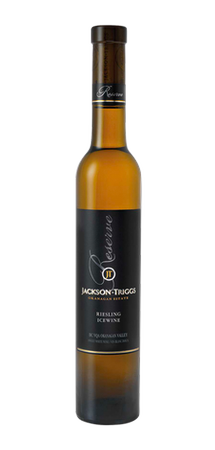
Tracing the history of Icewine in Canada, starting with pioneering Inniskillin co-founders Donald Ziraldo and Karl Kaiser.
Story has it that Icewine was discovered by happy accident in the late 1700s in Germany when an early frost had farmers scrambling to save their crops. Fast-forward to the 1980s when several winemakers in the Niagara region recognized cold-climate Ontario as an opportunity for crafting the iconic sweet wine right here at home. Inniskillin winery co-founders Donald Ziraldo and the late Karl Kaiser were pioneers in the category. An Austrian by birth, winemaker Kaiser was familiar with the iconic sweet wine from his homeland and attempted Inniskillin’s first vintage in 1983. Alas, birds devoured that sweet crop before it could be picked so the first bottling didn’t occur until a year later. The duo established the country’s Icewine dominance when they captured the Grand Prix d’Honneur trophy at the 1991 Vinexpo International wine competition in France with their 1989 Vindal Icewine. The rest, as they say, is history. In 2000, Inniskillin teamed up with the reputed Austrian crystal company Riedel to create a signature Icewine glass. The reasoning: Just as there is a purpose-built flute to enhance the attributes of Champagne, so too should there be unique glassware to optimize the glorious character of Icewine. The collaboration resulted in the Vinum Extreme, a small tulip-shaped glass crafted to enhance the delivery of fruit aromas to the nose and the most balanced overall expression of the liquid.
Serve Icewine chilled – about 10-12°C – and pair with both savoury and spicy dishes.
What is Icewine and how do you serve it for the ultimate experience?
Technically speaking, Icewine can be made using many different varietals, but best results come from grapes boasting complexity of flavour, exceptional aromatics and high acidity. In Canada, typical varietals include Riesling, Vidal, Gewürztraminer and Cabernet Franc. The wine’s extraordinary signature sweetness comes from the fact that grapes are plucked frozen from the vine, when the frosty vine-yard air reaches -8 to -12C. Then, they’re immediately pressed to extract their rich, golden, concentrated juice. In fact, Germany may be credited with inventing Icewine or Eiswein, but its climate does not ensure a harvest every year. That’s not true for Canada where we’re guaranteed the requisite, frigid temperatures. Icewine’s intense sweetness accounts for its positioning as the ultimate dessert wine, but it’s so much more than that. With its concentrated nature and balance of sweetness with acidity, it’s tailormade for cocktailing, delivering exponential flavour with very little volume. Hello Icewine martinis! Serve it chilled – about 10-12°C – and pair with both savoury and spicy dishes. Its sweetness plays perfect palate counterpoint to intense herbs and chili heat. And don’t forget the cheese tray: Icewine’s harmony with rich and robust cheeses from Brie to blue is legendary. Remember too that, unlike regular table wine, Icewine will keep in the fridge for up to a month once opened, so you don’t have to enjoy the entire bottle at a single sitting. Feel free to forgo the cheese or dessert course altogether. The sweet and nuanced elixir provides a truly exceptional tasting moment all on its own.
The classic Icewine that put Canada on the world stage
The classic icewine and the one that put Canadian Icewine on the international stage. In 1991, Inniskillin's 1989 Vidal Icewine was named the World's Best Wine (not just dessert wine) when it won the Grand Prix D'Honneur at Vinexpo in France. Rich tropical flavours of mango, honey, peach and papaya, and bright acidity are all key characteristics of Inniskillin Icewine and the reason this wine is always a favourite.



